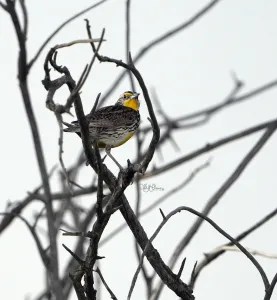We are very fortunate to observe some of the wildlife that our ranch supports and that co-exist with our livestock.

These Burrowing Owls have a successful nest on our grazing land. Burrowing owls have a compact and stocky build, measuring about 7 to 10 inches (18 to 25 cm) in height. They have long legs and a short tail. They have bright yellow eyes and a white chin patch. Their feathers are brown with white spots, providing excellent camouflage. These owls are named for their habit of nesting and roosting in burrows. They are capable of digging their own burrows but often repurpose existing burrows made by mammals like gophers. The burrows serve as protection from predators and provide a safe place for raising their young. Burrowing owls are primarily carnivorous and feed on a variety of prey. Their diet includes small mammals like mice, voles, and ground squirrels, as well as insects, reptiles, amphibians, and sometimes birds. They are skilled hunters and rely on their keen vision and hearing to locate their prey. I was thrilled to also see a Burrowing Owl in Paraguay. (image below)

We have a lot of wildlife that call our ranch home. We are able to provide water and ecosystems that suit their needs.



The cacti are blooming. And we found another Burrowing Owl pair nesting.


On warm summer evenings, Common Nighthawks roam the skies over grasslands. Their sharp, electric peent call is often the first clue they’re overhead. In the dim half-light, these long-winged birds fly in graceful loops, flashing white patches out past the bend of each wing as they chase insects. These fairly common but declining birds make no nest. They lay their eggs directly on the ground with no protection other than their incredible blending with the environment. Their young are so well camouflaged that they’re hard to find, and even the adults seem to vanish as soon as they land. The Common Nighthawk’s impressive booming sounds during courtship dives, in combination with its erratic, bat-like flight, have earned it the colloquial name of “bullbat.” The name “nighthawk” itself is a bit of a misnomer, since the bird is neither strictly nocturnal—it’s active at dawn and dusk—nor closely related to hawks.




This ferruginous hawk pair chose to use a platform that we had built a few years ago for their nest this year


Ferruginous Hawk is listed as Threatened under Schedule 1 of the federal Species at Risk Act , Endangered under the Alberta Wildlife Act, and Threatened under the Manitoba Endangered Species Act. The loss of and fragmentation of its habitat, native grasslands, are a serious threat to the population. Ferruginous Hawks also suffer from a lack of nest sites as more and more trees are cut down in their habitat. We appreciate their efforts to reduce rodents in our pastures.
